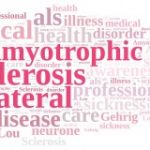Remember the Ice Bucket Challenge, the viral charity campaign bringing awareness to amyotrophic lateral sclerosis (ALS)? Well, we have some good news for you. The funds raised during this initiative helped scientists discover the genes responsible for ALS! The joined efforts of enthusiasts who poured over themselves a bucket of iced water soliciting donations for the research enabled the scientists to make an ALS breakthrough, which hopefully will bring us steps closer to understanding the disease and improving treatments.
In light of these news, here are some of our articles discussing ALS, along with associated health issues, such as BMI, alcohol consumption, and Parkinson’s disease.
 Amyotrophic lateral sclerosis (ALS) pain, an underestimated and neglected symptom
Amyotrophic lateral sclerosis (ALS) pain, an underestimated and neglected symptom
Advertisement
Amyotrophic lateral sclerosis (ALS) pain is often an underestimated and neglected symptom. ALS is a fatal neurodegenerative disorder, which is characterized by the progressive loss of motor neurons, muscle wasting, and respiratory dysfunction. Secondary symptoms, such as pain, can arise, causing additional difficulty in a patient’s life and further limiting one’s abilities.
Pain in ALS is not a primary symptom, but many patients still experience it. There is a lack of research with regards to pain and ALS, thus limiting treatment options available. More research is required in the area of pain and ALS in order to improve treatment options for patients.
Pain is an unpleasant sensation or emotional experience in response to a noxious stimuli, tissue injury, or trauma. Pain can be acute or chronic, depending on its cause. There are different types of pain experienced in ALS, including musculoskeletal pain, muscle cramping, and spasticity. Continue reading…
 Amyotrophic lateral sclerosis (ALS) risk affected by BMI, dietary intake, and alcohol consumption
Amyotrophic lateral sclerosis (ALS) risk affected by BMI, dietary intake, and alcohol consumption
Amyotrophic lateral sclerosis (ALS) risk is affected by body mass index (BMI), dietary intake, and alcohol consumption. Although the exact cause of ALS is still not understood widely, dietary intake is a modifiable factor, which may play a role in ALS.
Researchers from the University Medical Center Utrecht used a 199-item food frequency questionnaire in order to study dietary intake and the risk of ALS.
The study included newly diagnosed patients with ALS, and their final analysis included 674 patients and 2,093 control patients without ALS.
The researchers uncovered presymptomatic total calorie intake in patients with ALS was higher compared to the healthy controls. Presymptomatic BMI was lower in patients compared to the controls as well.
Further analysis found higher premorbid intake of total fat, saturated fat, trans-fatty acid, and cholesterol was linked to an increased risk of ALS, and alcohol intake was linked to a reduced risk.
The authors of the study concluded, “The combination of independent positive associations of a low premorbid body mass index and a high fat intake together with prior evidence from ALS mouse models … and earlier reports on premorbid body mass index support a role for increased resting energy expenditure before clinical onset of ALS.” Continue reading…
 Amyotrophic lateral sclerosis (ALS) triggered by junk DNA from fossil viruses (HERVs)
Amyotrophic lateral sclerosis (ALS) triggered by junk DNA from fossil viruses (HERVs)
Researchers have uncovered that the retriggering of human endogenous retroviral genes (HERVs) could lead to the development of amyotrophic lateral sclerosis (ALS), suggesting antiretroviral drugs may aid in treatment.
ALS is a progressive neurodegenerative disease that affects the nerve cells in the brain and spinal cord. It is also characterized by the breakdown of muscles, so people with ALS lose their ability to move. Motor neurons die off, and the ability to move and speak diminishes until eventually the individual is unable to function.
Up to 95 percent of ALS cases are sporadic ALS, meaning it can affect anyone, anywhere. Five to 10 percent of ALS cases are familial, meaning the disease is inherited. This increases the risk of a patient’s offspring developing ALS by 50 percent.
New research suggests that antiretroviral drugs may be useful in the treatment of ALS, as previous research uncovered the role retroviral genes play in the disease. Continue reading…
 Parkinson’s disease vs. ALS, differences in symptoms, causes, and treatment
Parkinson’s disease vs. ALS, differences in symptoms, causes, and treatment
Parkinson’s disease and ALS can cause difficulties in movement and are both known to be progressive neurological diseases.
ALS is part of a cluster of disorders known as motor neuron diseases that involve gradual degeneration and death of motor neurons. In a healthy individual, messages from motor neurons in the brain are transmitted to the motor neurons in the spinal cord and sent to the particular muscles. In ALS, this communication degenerates and cells begin to die. As a result, the message that is transmitted is incomplete. Unable to function, the muscles begin to weaken and waste away over time. Eventually, communication from the brain to muscles is lost completely.
In its early stage, ALS – also known as Lou Gehrig’s disease – may appear as Parkinson’s disease, which is also a neurological disease similar to ALS. Here we will outline the causes, symptoms, and treatment options for both ALS and Parkinson’s disease to help you understand the differences between the two. Continue reading…
 Study uncovers possible new explanation for ALS
Study uncovers possible new explanation for ALS
Researchers from the University of Toronto are closer to a possible explanation for Amyotrophic Lateral Sclerosis (ALS). ALS is a chronic neurological disease that does not currently have a cure. The researchers’ findings may bring doctors a step closer to improved treatment for both ALS and dementia.
The research team conducted their study in an often overlooked area of ALS where they found new ways in which the disease is killing nerve cells. Professor Dr. Peter St. George-Hyslop said, “These are dreadful diseases – the more we know about how they work, the faster we’ll find treatments or even a cure.”
Advertisement
Many cases of ALS are caused by a toxic buildup of certain proteins, which leads to nerve cell death in the brain and spinal cord. This results in paralysis and suffocation, putting life expectancy of ALS patients around five years. Studies have shown mutations that cause ALS create the protein that causes the cells to die. Researchers did not believe this protein buildup was important because it was different from other protein buildups such as amyloid or alpha-synuclein seen in other diseases.
Years ago, Dr. St. George-Hyslop decided to look into these protein formations. In a study focusing on the FUS protein, they discovered other lumps of proteins that could contribute to nerve damage in ALS.
FUS normally plays a role in healthy neurons, but the research team discovered FUS has the ability to change into a liquid or a gel. This enables FUS to collect other cellular components necessary for the creation of new proteins, which are delivered in compact, concentrated forms to the outer edges of neurons. When it reaches the destination, the gel becomes liquid and releases the cellular components that allow for protein synthesis. Continue reading…
